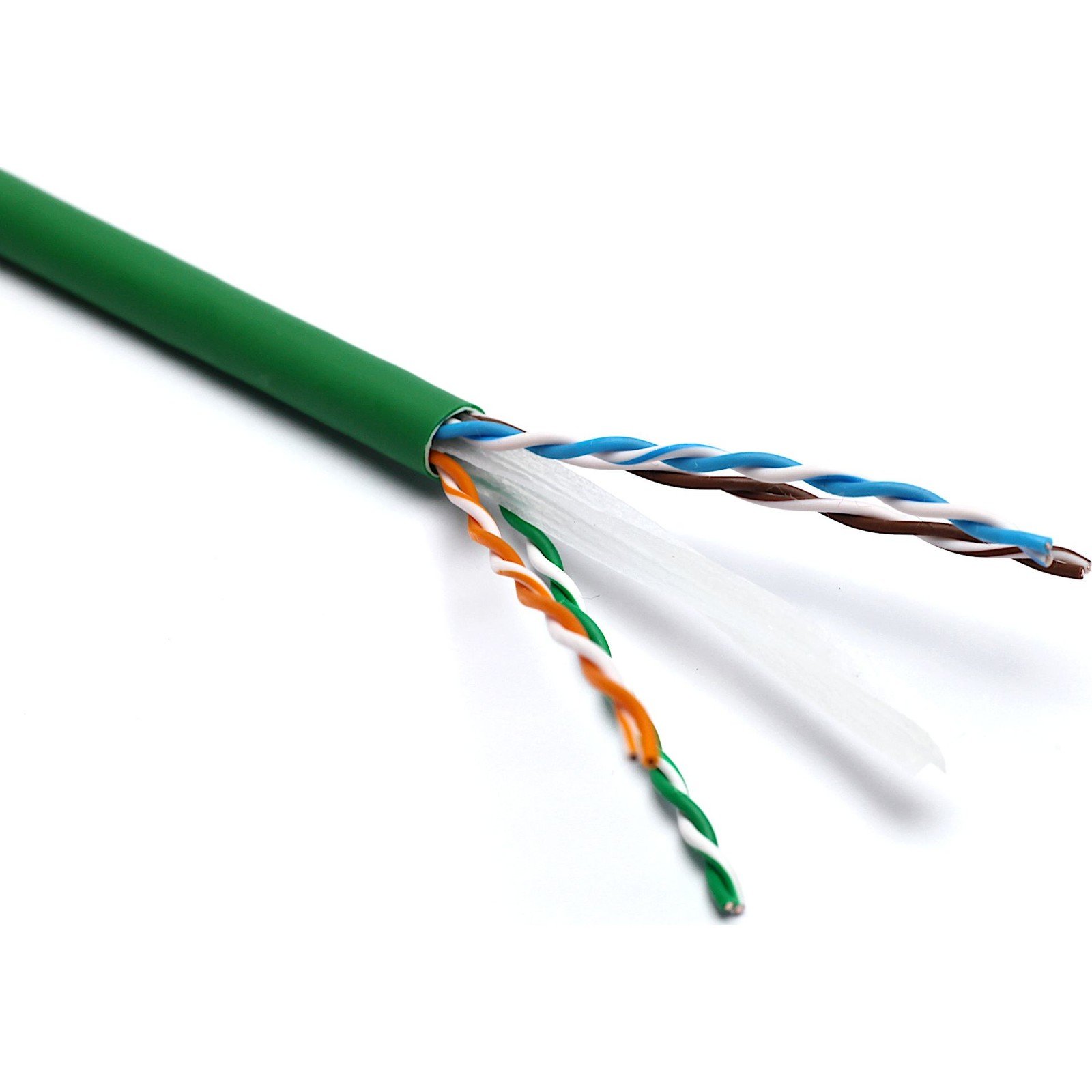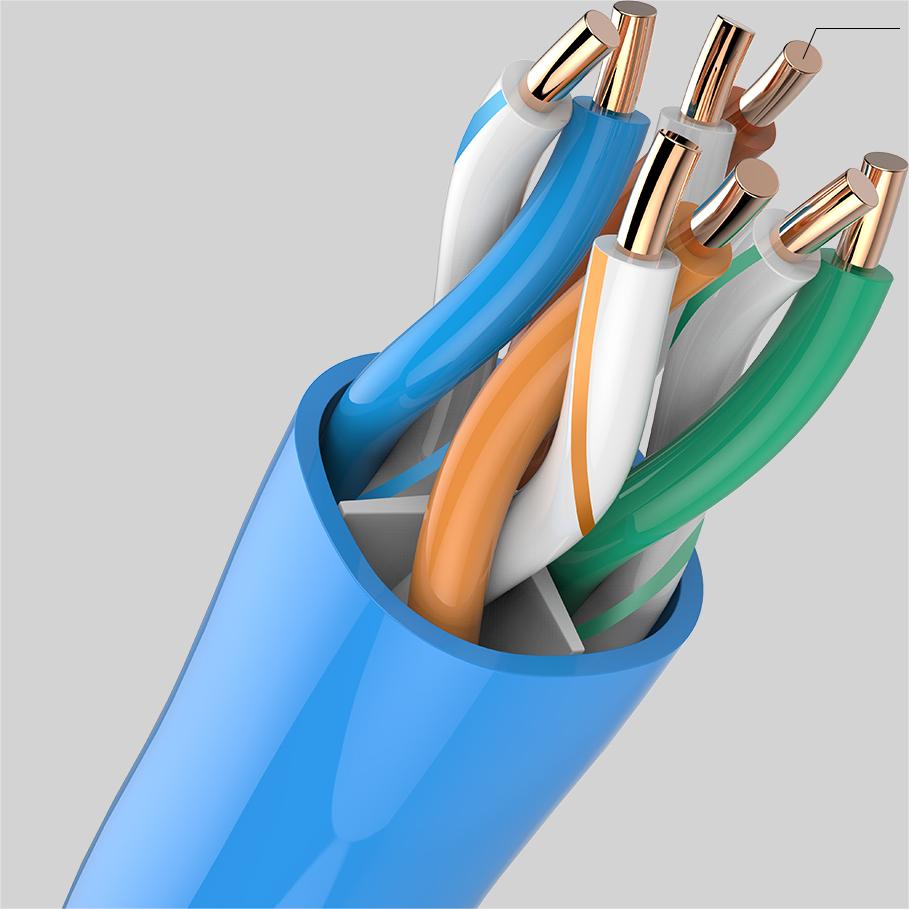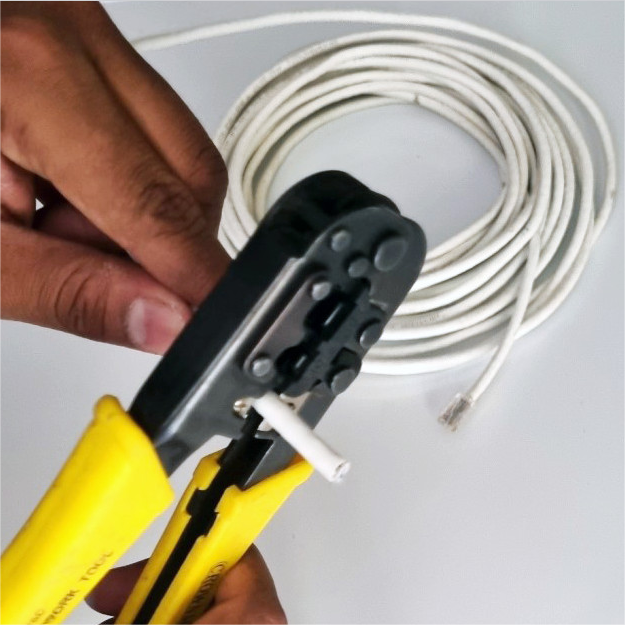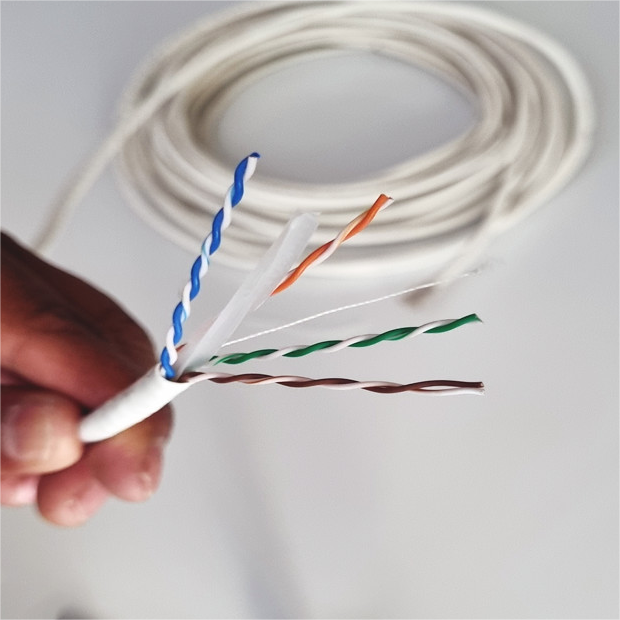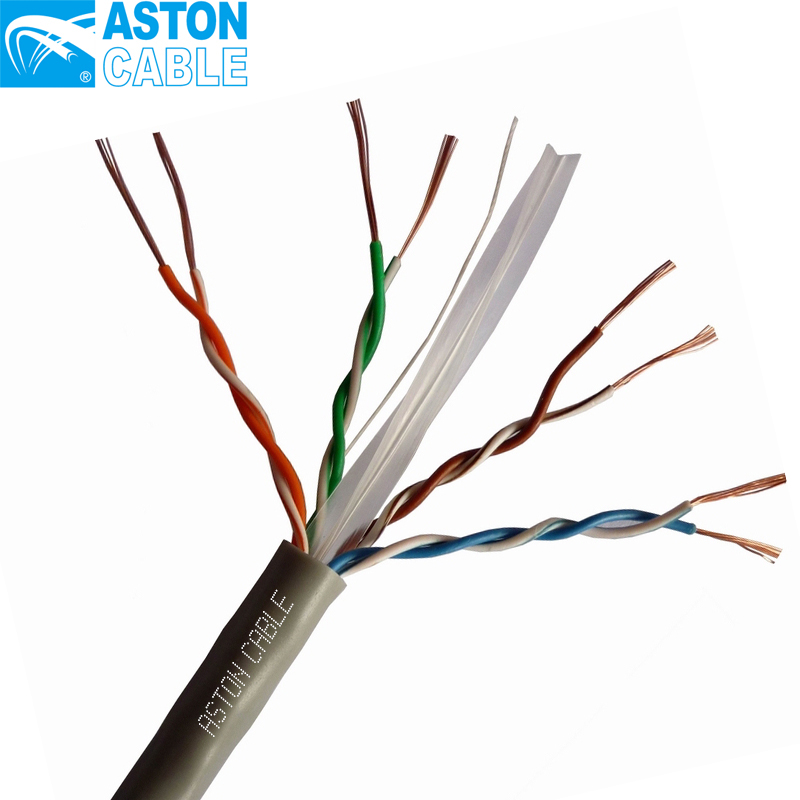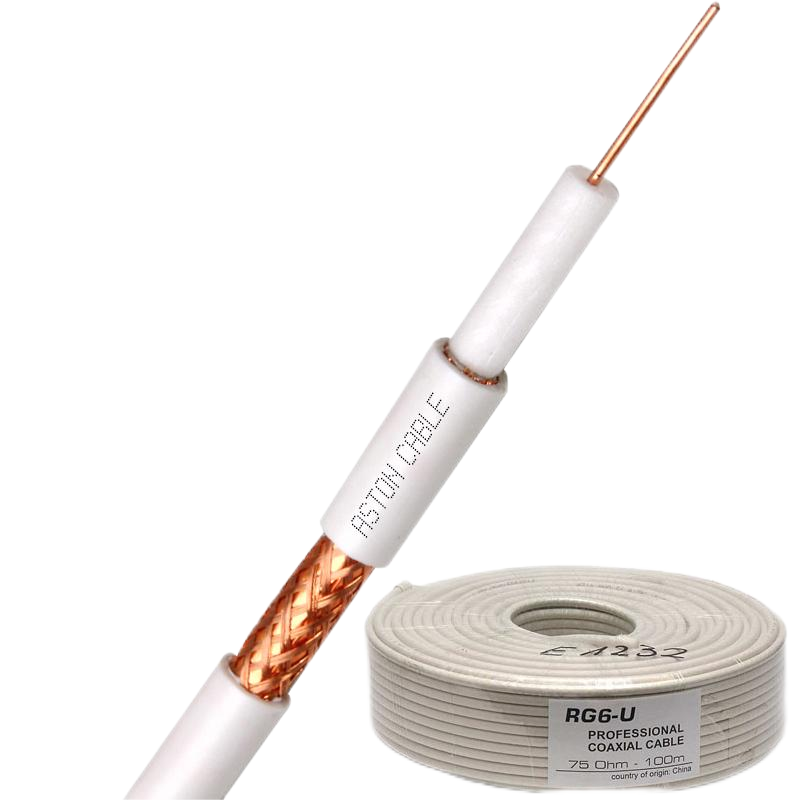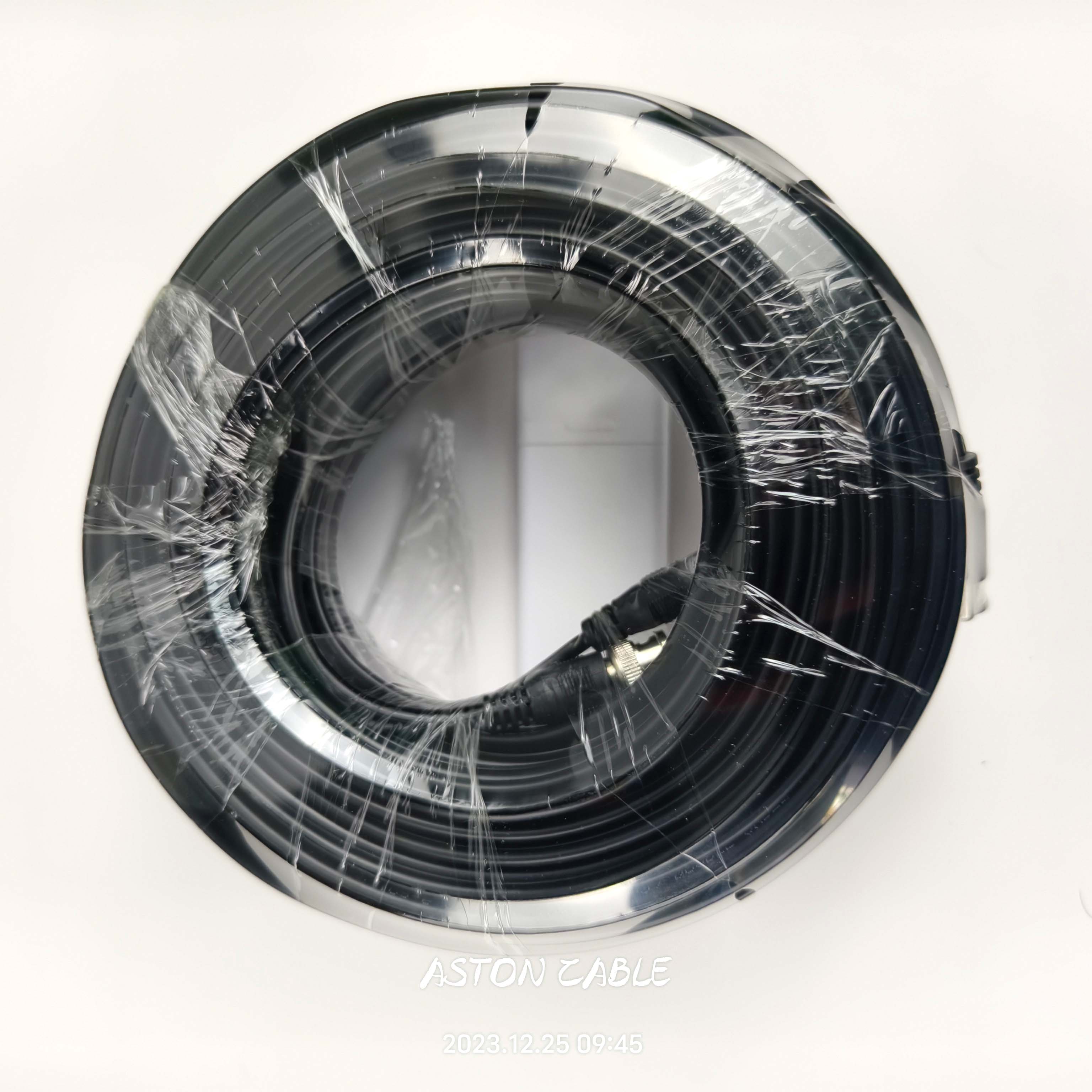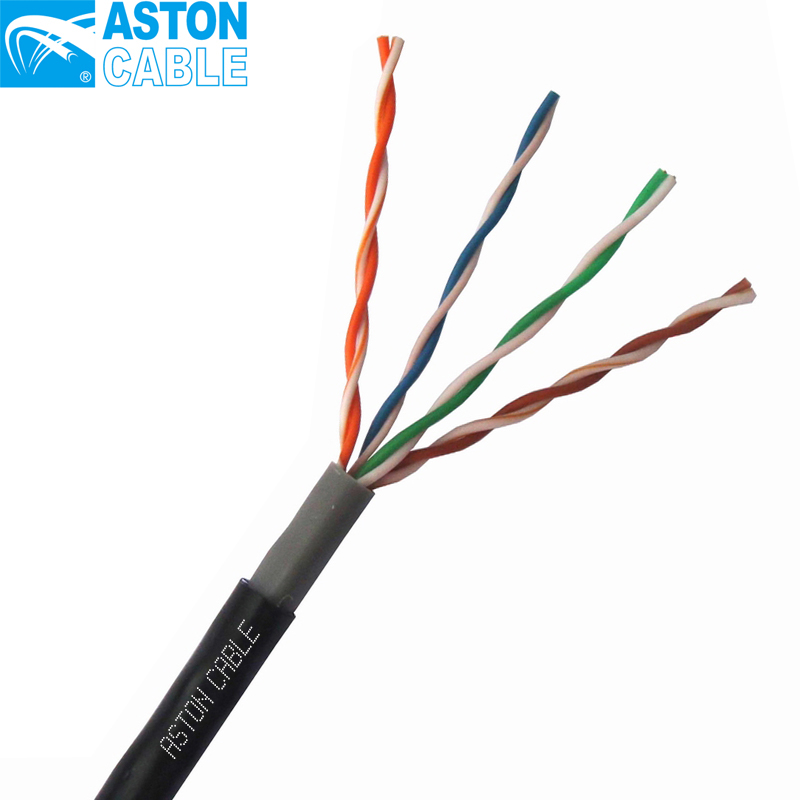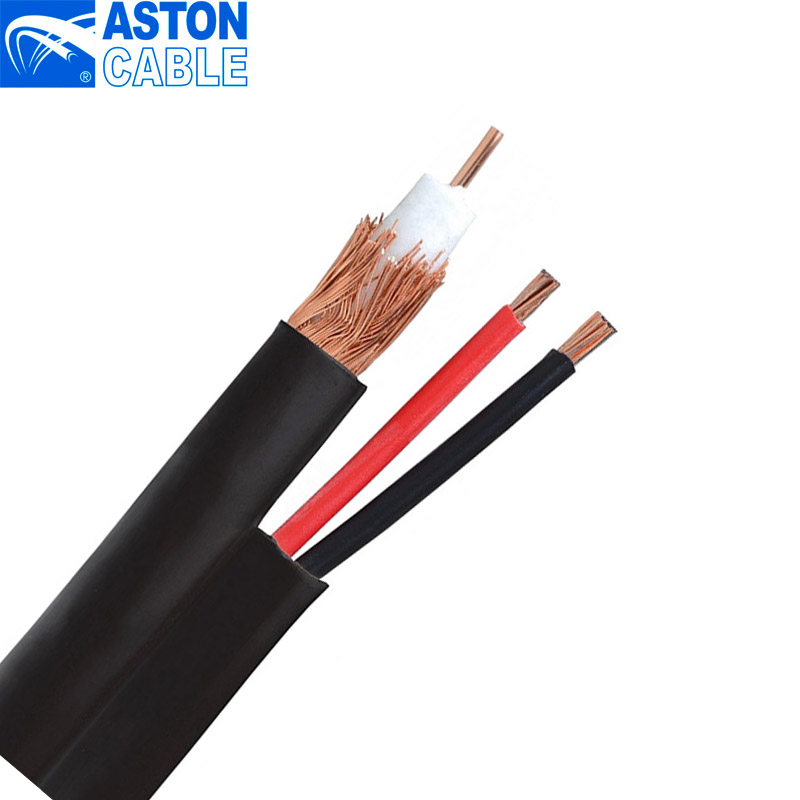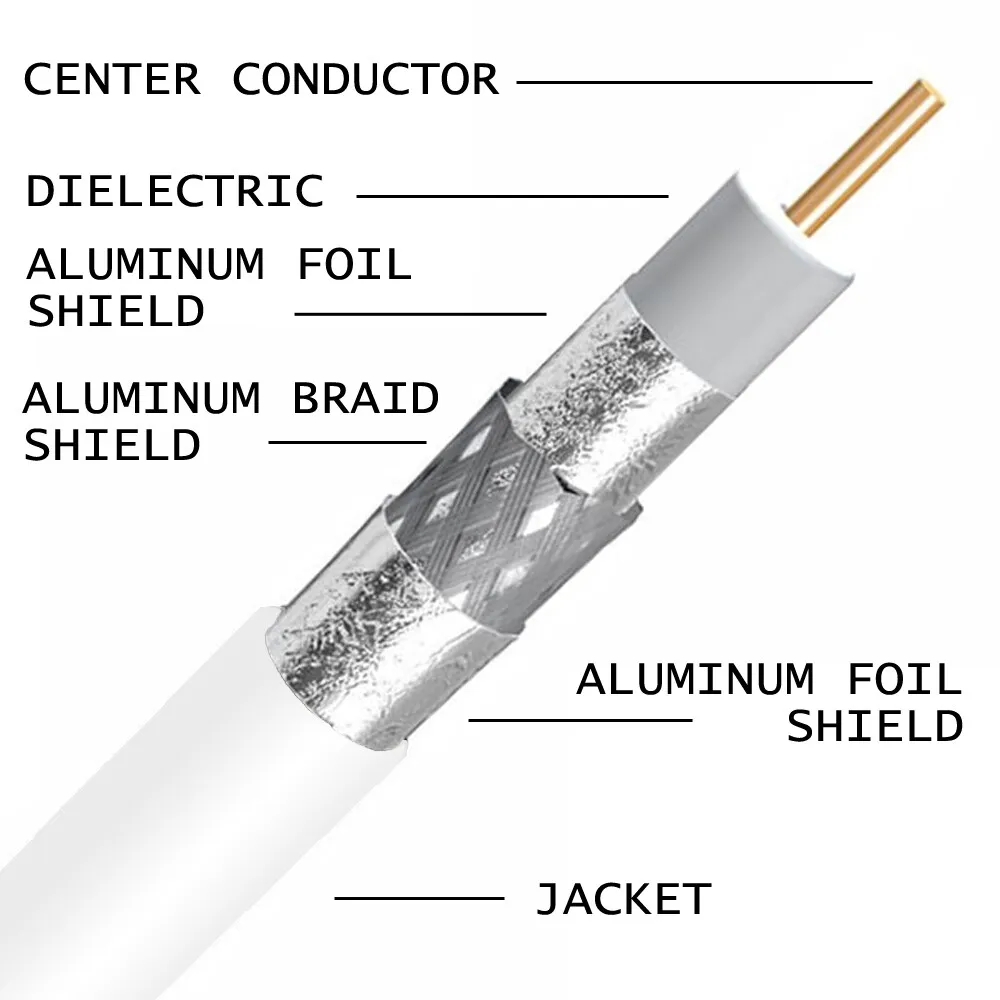| Parameter | Details |
|---|---|
| Conductor | 23AWG Bare Copper |
| Jacket Material | PVC, LSZH, PE |
| Shielding | Aluminum/Polyester, 110% Coverage |
| Frequency | 250 MHz |
| Color | Customizable |
Product Specifications
| Specification | Details |
|---|---|
| Core | 4Pairs Stranded Conductor |
| Insulation | PE Retardant |
| Outer Jacket | PVC, PE or LSZH |
| 2nd Shielding | 65% AL Braiding |
| Drain Wire | CCA/Bare Copper Solid or Stranded |
Manufacturing Process
The manufacturing process for CAT6 CCA LAN Cables involves core stranding, insulation application, shielding, and jacketing. Core stranding ensures the flexibility and strength of the conductor, while precise insulation techniques enhance electrical properties. The application of shielding, either aluminum foil or braiding, minimizes electromagnetic interference. Jacket extrusion finalizes the cable, providing protection and durability. Quality testing is performed to comply with standards like ISO9001 and CE, ensuring each cable meets optimal performance criteria. According to industry papers, these processes enhance reliability and longevity in data transmission applications.
Application Scenarios
CAT6 CCA LAN Cables are extensively used in networking environments, particularly in scenarios requiring high data rates and minimal interference. As highlighted in technical studies, these cables are ideal for gigabit Ethernet networks, spanning distances up to 100 meters with significant data throughput. They are found in commercial data centers, industrial environments, and residential setup where robust data communication infrastructure is needed. The enhanced shielding makes them suitable for environments with high EMI, ensuring consistent performance and data integrity.
After-Sales Service
- 24/7 customer support via phone and email
- One-year warranty service
- Replacement policy for defective products
- Technical assistance and troubleshooting
Product Transportation
Our logistics partners ensure swift and secure delivery worldwide, with all packaging adhering to international export standards. Shipping options include sea and air freight, tailored to meet the client's urgency and budget. Tracking services are available for all shipments, ensuring transparency and peace of mind for suppliers.
Product Advantages
- High-speed data transmission capability of up to 10GBASE-T
- Exceptional EMI/RFI shielding with 110% coverage
- Durable construction with PE, PVC, or LSZH jackets
- Compatibility with CAT5e and CAT3 standards
- Customizable design for varied client needs
FAQ
- What makes CAT6 cables different from CAT5e?
CAT6 cables offer higher bandwidth, operating at 250 MHz compared to CAT5e's 100 MHz, enabling faster data transfer and handling more data simultaneously, essential for modern high-speed networks.
- Why choose a cable with CCA rather than pure copper?
CCA cables provide cost-effective solutions for networking applications with adequate performance in less demanding environments, offering a balance between performance and cost for suppliers.
- How do CAT6 cables handle interference?
CAT6 cables are designed with enhanced shielding, like aluminum foil and braiding, to protect against electromagnetic interference, ensuring stable data transmission in environments with potential EMI sources.
- Can CAT6 cables be used outdoors?
Yes, with appropriate jackets like PE or LSZH, CAT6 cables are durable enough for outdoor applications, capable of withstanding environmental elements while maintaining performance integrity.
- Are these cables backward compatible?
Yes, CAT6 cables are backward compatible with CAT5e and CAT3 standards, allowing integration into existing network infrastructures without requiring complete system overhauls.
- What is the typical lifespan of a CAT6 cable?
With proper installation and under normal conditions, CAT6 cables can last over a decade, providing long-term reliability and performance in networking applications.
- What are the advantages of using LSZH jackets?
LSZH jackets produce minimal smoke and toxic emissions during combustion, enhancing safety in poorly ventilated areas and making them ideal for indoor installations.
- How is data integrity maintained in CAT6 cables?
Data integrity is upheld through precise twisting and shielding of pairs, reducing crosstalk and interference, crucial for consistent performance in data-sensitive environments.
- Can these cables support 10-Gigabit networks?
Yes, CAT6 cables can support 10-Gigabit Ethernet networks over short distances, making them viable for high-speed data centers and critical network backbones.
- What environmental factors affect CAT6 performance?
Temperature extremes, humidity, and physical stress can impact CAT6 cable performance. Ensuring appropriate installation conditions can mitigate these effects and maintain optimal functionality.
Product Hot Topics
- High-Speed Data Transfer in Contemporary Networks
With the increasing demand for high-speed internet and data transfer, CAT6 cables have become the backbone of modern networks. Their capacity to handle up to 10GBASE-T speeds allows for seamless streaming, gaming, and data-intensive tasks, making them indispensable in both residential and commercial environments. Suppliers benefit greatly from offering such advanced connectivity options, ensuring their clients stay ahead in the digital age.
- Understanding CCA Versus Pure Copper in Networking
Choosing between CCA and pure copper cables is a common dilemma in the network infrastructure domain. While pure copper provides excellent conductivity and durability, CCA offers cost-effectiveness, making it a viable option for budget-conscious projects. Discussing the pros and cons helps suppliers address consumer needs and educate them on the best practices for their specific scenarios.
- The Importance of Shielding in Modern Data Cables
As the digital landscape evolves, the need for reliable data transmission free from interference has grown exponentially. Shielding in cables like the CAT6 is crucial to achieving this. The protective layers block external interference, ensuring the integrity of the data packets. Suppliers can leverage this feature to highlight the advanced technology behind their products and the benefit it brings in maintaining network stability.
- Adapting to Rapid Changes in Network Requirements
Suppliers face the challenge of keeping up with ever-evolving network requirements. CAT6 cables, with their advanced capabilities, help bridge this gap by offering higher bandwidth and speeds necessary for modern applications. Staying updated on industry trends and innovations is key to providing relevant solutions and maintaining competitiveness in the market.
- Environmental Considerations in Cable Manufacturing
As environmental concerns become paramount, the demand for eco-friendly cable solutions is on the rise. Suppliers can play a vital role by promoting cables with LSZH jackets, which are safer for the environment due to reduced hazardous emissions. Highlighting sustainability measures in manufacturing can attract environmentally conscious consumers and align with broader green initiatives.
- Meeting the Demand for Enhanced Network Security
Network security has become a critical concern for businesses and individuals alike. The robust construction of CAT6 cables aids in safeguarding data against breaches and unauthorized access. Suppliers have the opportunity to emphasize the security aspects of these cables, aligning with the increasing need for data protection and privacy in today’s digital realm.
- Leveraging Technology to Address Network Downtime
Reducing network downtime is a priority for any enterprise, and using reliable and efficient cabling like CAT6 can minimize interruptions. Suppliers can focus on the technological advancements embedded in these cables that counteract potential points of failure, ensuring constant connectivity and enhancing user satisfaction.
- The Role of Customization in Meeting Client Needs
Customization in cable specifications allows suppliers to cater to diverse client requirements, from specific lengths to unique color codes. Offering customizable options can significantly enhance client satisfaction and loyalty, as it enables tailored solutions that address precise project demands. Suppliers leveraging customization can better position themselves in the market.
- The Economic Impact of Efficient Networking Solutions
Efficient networking solutions like CAT6 cables contribute to economic growth by enabling faster and more reliable internet services that support business operations and innovation. Suppliers providing cutting-edge solutions play a part in driving this economic impact, facilitating the infrastructure necessary for technological advancement.
- Bridging Digital Divides with Advanced Cabling
In regions facing digital divides, access to high-quality networking solutions like CAT6 cables can significantly improve connectivity and access to information. Suppliers have a role in supporting initiatives that aim to bridge these gaps, offering products that enable broader internet access and technological inclusion for underserved communities.
Image Description

